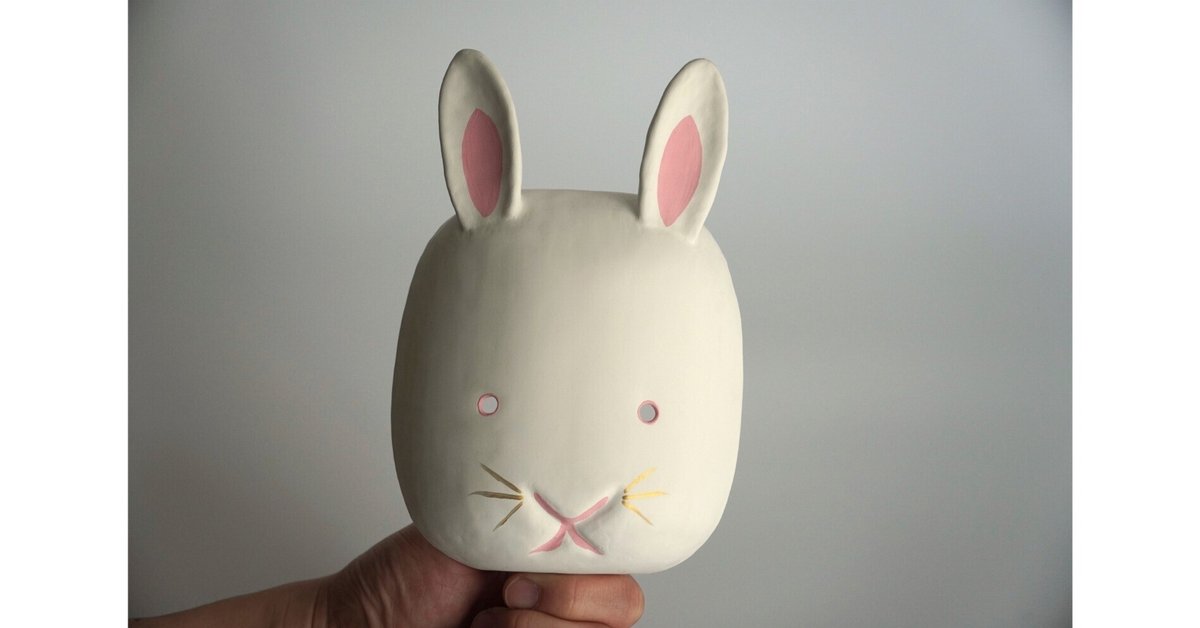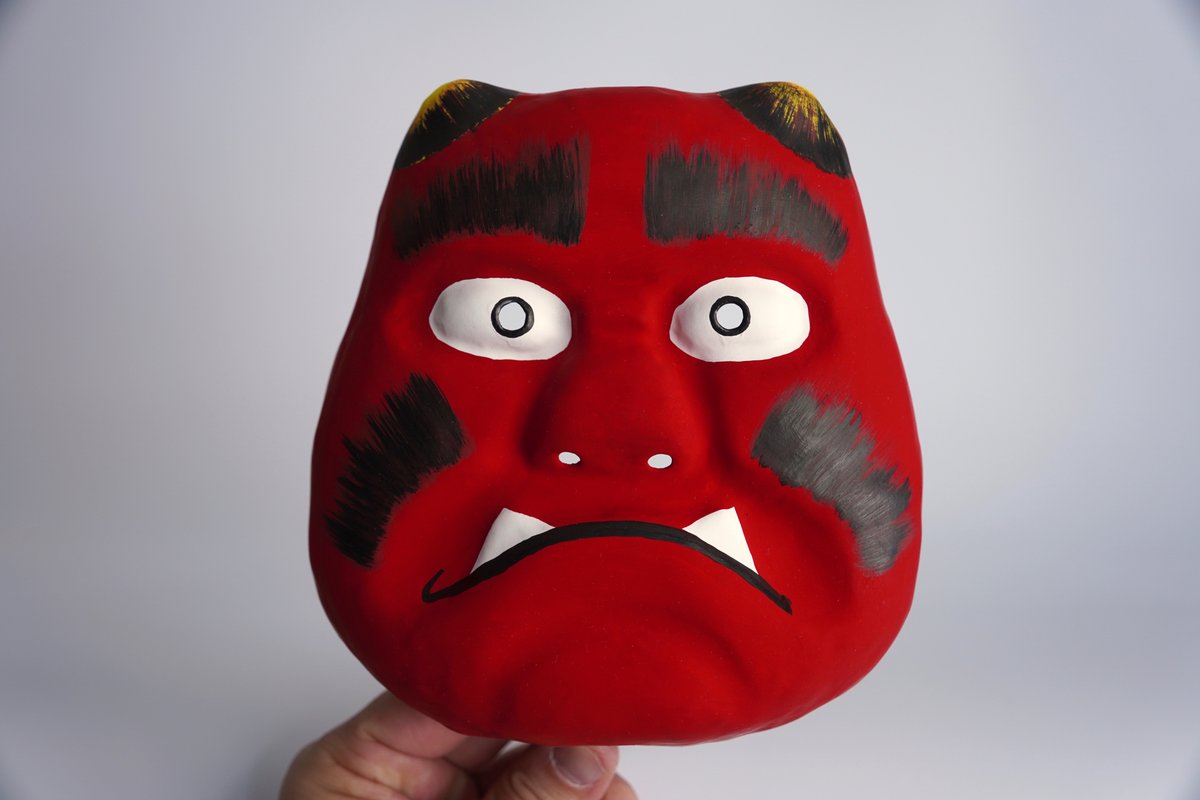
柳屋 YANAGIYA REPRODUCT | 郷土玩具 Folk toy| 鳥取県 Tottori Prefecture

「柳屋」は鳥取県鳥取市にて1928年から2014年までの 86年間にわたり郷土玩具を作り続けた工房です。屋号は「柳に雪折れなし」という、ことわざに由来します。
初代 田中達之助は因幡地方の歴史や伝説を元に創作玩具を発表する一方、廃絶していた玩具の復元にも尽力し、妻 利子とともに研究と制作を重ねました。屋号を体現するような仕事は娘夫妻へと受け継がれ、張り子面や土鈴、木製人形など、50種類以上にも及ぶ多種多様な玩具が生み出されました。
2020年に始動した『YANAGIYA REPRODUCT』では新たな作り手たちが二代目 田中謹二・宮子夫妻にその手法を学び、柳屋の玩具制作に取り組んでいます。
Yanagiya was a local toy workshop in Tottori City, Tottori Prefecture. They made folk toys for 86 years, from 1928 to 2014. "Yanagiya" comes from the proverb, "Willow trees never break in the snow." Tatsunosuke Tanaka, the founder of Yanagiya, created toys based on the history and legends of the Inaba region. He also devoted himself to restoring toys that had fallen into disuse. For many years, he researched and created toys with his wife, Toshiko. Yanagiya was passed on to their daughter and her husband. Yanagiya’s work fully embodied the meaning of the company name. They created over 50 toys, including Japanese paper mache masks, clay figures, and wooden toys.
In 2020, a new group of creators known as YANAGIYA REPRODUCT formed. They devoted themselves to learning the techniques of Kinji and Miyako Tanaka and to the reproduction of Yanagiya folk toys.

いなばの白兎 / The White Rabbit of Inaba
出雲の国の大国様は因幡(いなば)の国の八上比売という美しい姫に一目会いたいと出かけたその道中、サメによって身体を痛めた白兎に出会いました。かわいそうに思った大国様は真水で体を洗い、敷いた蒲の穂の上で安静にと教えたところみるみるうちに白兎は完治しました。その後、白兎は大国様を八上比売の元へお連れし、二人は結ばれました。
The deity Okuninushi of Izumo province went on a journey to meet the beautiful princess Yagami Hime from Inaba province. Along the way, Okuninushi met a white rabbit that had been injured by a shark.
Feeling sorry for the rabbit, the deity gently washed its body with fresh water and laid it on a mat made of rushes to rest. The rabbit quickly healed, and as gratitude to the deity, it led him to the princess. The princess and the deity fell in love and eventually got married.

氏神さんの御祭礼の時、おみこしの前を麒麟獅子と猩々が清めて行きます。この前を『バレ榊』といって若者四人が激しく暴れ廻りながら榊をかついで行きます。押し倒す、投げるなど荒れ放題ですが、これも神事の一つなのです。あぶないから、黄色木綿の袋をかぶった大男が荒れ榊の通る道を拡げるのです。黄色の木綿袋に目と口だけ切り抜いてあり、眉は墨で書いたものです。『ぬけが来た』と云ったら、見物の人々は恐れて逃げたものです。
There is a unique festival in Tottori Prefecture. During this local festival, a Kirin giraffe lion and a Shōjō mythical primate clear the way in front of the portable shrine. Four young men carry a sakaki tree while aggressively rampaging through the streets.
They knock down and throw things around, but don't worry; this is a part of the religious ceremony. To ensure safety, a large man wearing a yellow cotton bag watches over the path of the rampaging sakaki tree. The bag only has simple holes cut out for the eyes and mouth. The eyebrows are drawn in thick black sumi ink. When he shouts, "Nuke ga kita!" ("The thief is coming!"), the spectators flee in fear.

藩政時代の権現祭【樗谿(おうちだに)神社】は極めて盛大なものでありました。藩公のゆるしで、この祭礼の当日だけ行列中の面のうち、『青の鼻たれ面』をかぶっている者は、その何びとたるを問わず、いかなる悪口を言ってもよし、となっていました。それで、この面は競りが入って恨みのある家の者がかぶったものです。
During the feudal era, the Gongen Festival was extremely grand. With permission from the feudal Lord, those who wore the "Blue runny nose Masks" during the procession were allowed to say any insult to anyone they wanted, regardless of their status or background. That is why these masks were often bid on and worn by individuals with grudges against others.
*The color “green” is often referred to as “blue” in Japanese.

鳥取市を中心にして因幡の各神社の祭礼に行われる麒麟獅子舞は独特なものです。麒麟獅子は頭に一本の角があり、龍に似た長い面(顔)、金箔おきで、瞳は新月型です。歌はなく、笛と太鼓、スリガネにて、とてもゆるやかに舞い、幽玄そのものです。悪疫の入らぬように、猩々が導いて清めの舞を先に舞ってから獅子の舞いになります。獅子の舞い子も猩々も、共に紅木綿の上着、下着、ウコンの依り帯を締めています。
The Kirin lion dance performed during festivals of Inaba shrines around Tottori City is unique. The Kirin lion has a single horn on its head, a long face similar to a dragon, crescent moon-shaped eyes, and is decorated with gold leaf. There is no singing.
The dance is performed fluidly to the accompaniment of flutes, drums, and sleigh bells. It is very mysterious. The dance of the Kirin lion follows the dance of the Shōjō mythical primate to purify the path of the portable shrine and prevent epidemics. The Kirin lion and the Shōjō mythical primate wear red cotton coats, pants, and a turmeric-colored obi.

赤おに面は初代 柳屋 田中達之助の創作玩具です。
この意匠は達之助が自宅近くの久松山の山頂で、妻 利子の握ったおにぎりを手にしたときにひらめいたそうです。ずんぐりした顔には勇ましい眉と髭、固く結んだ口元からは鋭い牙がのぞきます。一見すると怖そうな赤おにですが、どこか憎めない表情が特徴です。
Akaoni mask is an original, designed toy from the first generation of Yanagiya Tatsunosuke Tanaka. Oni is a Japanese demon that appears in folk tales and other traditional ceremonies.
The design of the mask came to him in a flash on the top of Mt.Hisamatsu, near his house, at the moment when he grabbed a rice ball made by his wife Toshiko. It has a short, round shape face with manly eye brows and a beard. His sharp fangs are peeking out from lips which are closed tightly . It looks fierce at first glance, but it has a characteristic, lovable expression.

『片へら人形』
鳥取市二階町二丁目の工人が端午の節句に合わせて作る人形に、片へらデコと言うヘギ板で出来たものがあり、 因幡の国の名物と伝えられている。かなり粗雑なつくりではあるが、武者の勇ましい姿を競う様子がなかなか面白い。五騎立てあるいは七騎立てがあり、城郭での攻防の様子を表している。
全体で一間(180cm)は無い。『伯耆民談記』によると、この片へらデコは、御当家(鳥取藩の当主、池田家)が三河吉田におられる時作り始めたので、世間ではこれを「吉田細工」と言い、三河の吉田・播磨の姫路・備前の岡山・因幡(いなば)並びに伯耆(ほうき)の米子・倉吉でもこれを作るのは、おおよそその名残と言われる。
Unique to the Inaba region, Katahera dolls make endearing decorations for the Boy's Day festival. These dolls are delicately made from thin strips of wood by skilled craftsmen in the Nikakimachi ward of Tottori City. The crude, simple construction makes watching the tiny, wooden warriors compete for bravery all the more intriguing.
All the excitement of the calvary and a castle fit into a remarkable 180cm. According to historical records in the Hōki-min-dan-ki, this doll emerged when the ruling Ikeda family lived in the Mikawa Yoshida region. That is why they were sometimes referred to as "Yoshida Zaiku." Similar dolls are made throughout the former Yoshida region, including Himeji and Bizen in the Inaba province and Yonago and Kurayoshi in the Hoki province.
製作:
木工 ドモク堂 朝倉康登
彩色 朝倉邦子
焼成 国造焼

田中謹二・宮子夫妻の監修の元、地元の木工工房、染織工房や彩色協力してくださる方により、嘉久雛を復刻することができました。 「嘉久雛 / かくびな」と言い、かくびなの「かく」は四角 の「角」ではなく「嘉久」と言う字をあてます。めでたく喜ばしいことが、末永く続くようにという思いを込めて製作されていました。
製作:
木工 朝倉康登
NPO法人おりもんや(染織)
朝倉邦子(彩色)
Under the supervision of folk toy masters Kinji and Miyako Tanaka and with the cooperation of local woodworking studios, dyeing studios, and painting studios, it was possible to replicate the Kakubina folk dolls. The "かくkaku" in "嘉久雛kakubina" is sometimes mistaken for the character "角kaku," meaning corner because of the doll’s square shape, but “かくkaku” is actually written with the characters "嘉久Kaku." The dolls were made with the wish that joyous and celebratory events continue for a long time.
*The character嘉久can also be read as “Yoshihisa,” a common boy’s name. The character 嘉 carries the meaning of “happiness, praise, and esteem”. While the character久 means a “long time.”

豆天神 / Small(Mame)Tenjin

豆天神と堂内天神について
鳥取に小天神は明治以前から作られていたと思われます。ほとんどが赤一色で彩色され、他の色はごく小部分です。
昭和初期ごろ迄、正月には必ず掛け軸でも人形でも天神さまをお祭りしたものです。面白いことには天神さまの鏡餅は小さいのを子供にまるめさせました。
天神さまのお祭は仲々賑やかでした。それぞれに献燈と大書してある大きな長い提灯を台車の両横に5つならべて、縄で美しく飾り、各町の子供達が皆で曳いて行くのです。先頭の子供は「子供連」と云う弓張り提灯を持ち「オヤサー、オヤサー」と勇ましく声をはりあげて行きました。道中の家々には軒アンドン、吊りアンドンがしてあったものです。
柳屋 先代 田中達之助
Mame Tenjin and Dounai Tenjin:
It is believed that the Tenjin dolls have been made in Tottori since before the Meiji era. The dolls are primarily red, with only small amounts of color added. Until around the early Showa period, it was customary to celebrate Tenjin during the New Year. Scrolls and dolls were typical decorations for this festival. Small children were asked to make the tiny mochi rice cakes given as offerings to Tenjin.
The Tenjin festivals were lively events. Large paper lanterns with dedications written on them were set up on the sides of a cart beautifully decorated with ropes. The local town children would all pull the cart together. The leader held a bow-shaped paper lantern and shouted, "Oyasa, oyasa," spiritedly. The houses along the way would also be decorated with hanging lanterns.
* In the Shinto native belief system of Japan, Tenjin is the god of academics and learning.
* Mame, which means ‘bean’ in Japanese, refers to the small size of the Mame Tenjin doll. *Dounai simply means 'inside a cave,' echoing the practice of placing statues of gods in caves.
製作:朝倉邦子(成型/彩色)・国造焼(焼成)


鳥取県の玩具工房 柳屋(2014年廃業)の田中ご夫妻の監修の元、鳥取県内の有志・協力者により石膏の型おこし・陶土で笛の製作・彩色に関わる方々によりハト笛を復刻することが出来ました。 ハト笛は素焼きの土笛に鮮やかな彩色を施した玩具です。尾っぽを吹くと可愛らいしい音色が響きます。
製作:九十九正一(成形)・朝倉邦子(彩色)
The Yanagiya Toy Workshop in Tottori Prefecture closed in 2014. Under the supervision of folk toy masters Mr. and Mrs. Tanaka and with volunteers and supporters' help, the reproduction of the Dove Flute was possible. The making of plaster molds, the unglazed earthenware, the hand-painted bright colors, the work of all these various folk craftsmen brought it back to life. When you blow into its tail, it produces a cute sound.

因幡八上羽子板(表)/ Inaba Yagami Hagoita


素材:羽子板/モチノキ・彩色絵の具(膠・胡粉・絵具)
羽根/無患子(ムクロジ)・因州和紙
サイズ:w.25.5cm x d.10cm x 1cm
重量:100g
製作(提供):朝倉康登(木工)・朝倉邦子(彩色)・倭文神社(無患子)
平安時代中期の分徳天皇の時代(西暦827年 - 858年)に因幡の国の千賊谷(現在の鳥取県鳥取市用瀬町宮原近くの千賊山)に多くの盗賊がいたことから始まります。富豪である鳥越長者の娘、八上姫は盗賊の頭目から恋慕われ、さまざまな策略で関係を持つことになりました。乳母に知られてしまい、恥じて命を絶ってしまいました。激怒した頭目は、さらに凶暴になって暴れ回りました。
そこで、朝廷から討伐を命じられたのが、在原中納言平朝臣でした。朝廷は平朝臣に薬師如来の像を授け、守ってもらいました。しかし、盗賊たちはなかなか降伏しませんでした。
朝廷からは、平朝臣の位を剥奪する使者がやってきました。平朝臣は決心し、犬山神社の下で神に祈りを捧げながら、千体の薬師如来像を彫りました。像を川に流して祈ったところ、勇気が湧き、ついに盗賊たちを平定することができました。
平朝臣は、像を彫った余った木材で羽子板を作って子どもたちに配りました。これが、宮原羽子板の始まりです。このうち12枚は朝廷と国主に献上されました。
宮原羽子板は、純白のノブの木で作られていました。後に、イモギという木が使われた時期もあったそうです。
柳屋初代 田中逹之助氏は同じ復興するならば昔のままにと思い『ノブの木』を伐り出して貰い製作されたそうです。YANAGIYA REPRODUCTの八上羽子板(宮原羽子板)は『ノブの木(ノグルミ)』に似た純白のモチノキを材料として復刻製作に用いています。
During the mid-Heian period, in the era of Emperor Buntoku (AD 827-858), many bandits inhabited Senzoku Valley in the land of Inaba (near present-day Senzoku Mountain in Miyahara, Mochigase-chō, Tottori City, Tottori Prefecture). The daughter of a wealthy man, Torigoe Chōja, Yagami Hime, was courted by the leader of the bandits, and through various schemes, they became involved. When her nurse discovered the affair, Yagami Hime, feeling ashamed, took her own life. Enraged, the bandit leader became even more violent.
The court then ordered the subjugation of the bandits, assigning the task to Arihara Chunagon Taira no Ason. The court entrusted Taira no Ason with a statue of Yakushi Nyorai for protection. However, the bandits were not easily subdued.
A messenger from the court came to strip Taira no Ason of his rank. Resolute, Taira no Ason moved to the base of Inuyama Shrine and, while praying to the gods, carved a thousand statues of Yakushi Nyorai. He sent these statues down the river while praying, which filled him with courage, and he was finally able to subdue the bandits.
Taira no Ason used the leftover wood from the statues to make hagoita (battledores), which he distributed to children. This marked the beginning of the Miyahara Hagoita. Twelve of these hagoita were presented to the court and the provincial lord.
Miyahara Hagoita were made from the pure white wood of the walnut tree. Later, there was a period when the wood of the himeshara tree (imogi) was used.

素材:材料/桧 彩色/膠・胡粉・絵具
サイズ:w.5.5cm x d.10.5cm x h.4.5cm
重量:45g
製作:仏巧舎(木彫)・YANAGIYA REPRODUCT(彩色)
本来の麒麟獅子は金色がベースだが玩具に仕立てた先代の達之助さんは彩色を赤色をベースに玩具表現とした。
麒麟獅子(きりんじし)は、鳥取県や兵庫県に伝わる民俗芸能。獅子舞の一種であるが、麒麟がモチーフになっているために通常の獅子舞よりも面長な獅子頭で、色は金色、一本角があり、耳が逆立っている。
因幡国(現在の鳥取県東部)に古くから伝わる獅子舞である。1650年、鳥取藩主池田光仲が鳥取東照宮(現・樗谿神社)を建立した際、権現祭の神幸行列で行なわれたのが始まりと言われている。徳川氏・池田氏の権威を象徴するものとして、獅子を聖獣の麒麟に、道化を猩々(しょうじょう)にしたとされている。
The original Kirin Lion is based in gold, but the previous representative, Tatsunosuke, crafted a toy version with a predominantly red color scheme.
The Kirin Lion (Kirin Jishi) is a folk performing art that is transmitted in Tottori Prefecture and Hyogo Prefecture. It is a type of lion dance, but its motif is based on the Kirin, which gives it a longer face compared to a typical lion dance. The color is gold, it has a single horn, and its ears are upright.
It is a lion dance that has been passed down in Inaba Province (now the eastern part of Tottori Prefecture) for a long time. It is said to have originated in 1650 when the Tottori domain lord, Ikeda Mitsunaka, established the Tottori Toshogu Shrine (currently known as Ouchidani Shrine), and it was performed during the Gongen Festival's procession. It is believed that the lion was transformed into the sacred beast, the Kirin, and the clown into the Shōjō (a mythical red-faced creature), symbolizing the authority of the Tokugawa and Ikeda clans.

ショロショロ狐(土鈴)
材料:陶土(素焼き)/ 胡粉・膠・絵具
サイズ:w.3.5 x d.3.5 x 7.2cm
重量:45g
製作:朝倉邦子(成形)・国造焼(焼成)・彩色(YANAGIYA REPRODUCT)
*本体の中に玉が仕込んであり振るとコロコロと音がなります。
ショロショロ狐:駟馳山(しちやま / 鳥取県の鳥取市旧福部村)と岩美町にまたがる山)のふもとのショロショロと落ちる山さがりの水の所で、人間の前で美しい娘に化けて人をだましたとされています。
*The body has a ball inside, and when it is shaken, it makes a rolling sound.
Shoroshoro Fox: It is said that the fox disguised itself as a beautiful girl and tricked people in front of humans at a waterfall at the foot of Mount Shichiyama (a mountain straddling the former Fukube Village in Tottori City and Iwami Town in Tottori Prefecture).

鳥取県に古くから伝わる民話を題材とした因幡五狐
尾無し狐【ONASHI GITSUNE】
青谷の長尾の山の古狐で、年増の女に化け
て人を化かす、すこぶるかしこい狐でした。

因州和紙・胡粉・膠・絵具・首の付け根(陶土使用)
*首元をツンツンと触ると首を振ります
w.7.5cm x d.6cm x h.5.5cm
15g
ショロショロ狐【SYORO SYORO GITSUNE】
ショロショロ狐:駟馳山(しちやま / 鳥取県の鳥取市旧福部村)と岩美町にまたがる山)のふもとのショロショロと落ちる山さがりの水の所で、人間の前で美しい娘に化けて人をだましたとされています。

因州和紙・胡粉・膠・絵具・微量な砂(足下に砂が仕込まれています)
*本体を振ると砂が振れてサラサラ(ショロショロ)と音がします
w.5cm x d.4cm x h.8cm
10g
恩志の狐【ONJI NO KITSUNE】
岩井温泉に行く途中の恩志地方に出る古い狐で悪賢く灯をともして化かし、里人に悪さをしました。

因州和紙・胡粉・膠・絵具
w.3cm x d.3cm x h.8cm
10g
おとん女郎【OTON JYORO】
立見峠に住んでいた親狐が仔を育てるために、峠で休む油屋の油を少しずつとっておりました。 仔が大きくなったので、その恩返しに女に化けて身売りをし、貧乏な油屋にそのお金を出して商売の元手にしました。

因州和紙・胡粉・膠・絵具
w.4cm x d.3cm x h.9cm
20g
経蔵坊【KEI ZO BOU】
殿様の使いで鳥取と江戸を三日で往復する御用を努めていましたが、悪い狐を捕る焼鼠の罠に掛かって作州で死にました。殿様は哀れに思い久松山に祠りました。

因州和紙・胡粉・膠・絵具・首の付け根(陶土使用)
*首元をツンツンと触ると首を振ります
w.7.5cm x d.5cm x h.5cm
15g

Here’s the English translation of the folk tales from Tottori Prefecture featuring the Inaba Five Foxes:
**Onashi Kitsune**
An old fox from the Nagao Mountain in Aoya transformed into an older woman to mislead people; it was an extremely clever fox.
**Shoro Shoro Kitsune**
At the foot of Shichi Mountain, by the place where water flows down beautifully, this fox transformed into a beautiful girl and deceived people.
**Onji no Kitsune**
An old fox from the Onji area, encountered on the way to Iwai Onsen, was clever and used lanterns to deceive the villagers, causing trouble for them.
**Oton Jyorō**
A parent fox living at Tachimi Pass was quietly taking a little bit of oil from an oil shop to raise her cubs. As her offspring grew, she transformed into a woman, sold herself, and used the money to help the poor oil merchant get started in business as a way to repay the kindness.
**Keizobou**
He was tasked by the lord to make a round trip between Tottori and Edo in three days. However, he fell victim to a trap set for mischievous foxes and died in the Chugoku region. The lord, feeling pity for him, honored him with a shrine on Kyusyou Mountain.
【お問合せ先】
COCOROSTORE
〒682-0821 鳥取県倉吉市魚町2516
0858-22-3526
HP:https://cocorostore.jp
Instagram:@yanagiya_re
